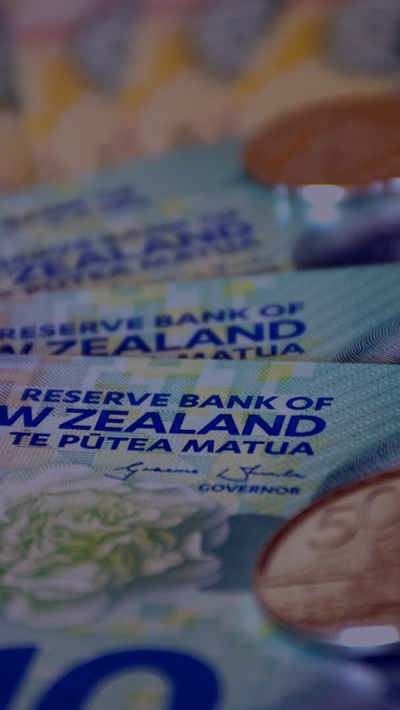Speak to our experts
Contents
In CPB v WSP the High Court accepted CPB’s claim against WSP over an error in the design elements used to inform CPB’s tender for a large Waka Kotahi project and awarded CPB the full $5.3m sought. We run through the background and the damage quantification assessment used to deliver such a clean and clear result.
Background
This decision relates to the Southern Corridor Improvement Project, which widened a 7.8km stretch of SH1 between Manukau and Papakura, and required 11km of additional lanes, six new bridges and upgrades to 16 existing bridges.
Tenders were called for in 2014 and construction company CPB partnered with designer WSP to put together a tender. The parties negotiated a tender services agreement under which WSP was to provide designs and other information for CPB’s tender.
After CPB’s tender was accepted, it became apparent that the pavement design supplied by WSP was defective. Additional pavement work was required and CPB brought a claim against WSP for breach of contract and negligence.
At trial, WSP accepted that its tender pavement design was not compliant with Waka Kotahi’s requirements but resisted the claim on various bases.
The dispute occurred against the backdrop of a project in which CPB suffered significant losses. CPB’s tender price was approximately $192m. The next lowest tender price was over $67m higher. CPB incurred an overall loss on the project in the order of $42m.
Liability
The liability contest focussed on (a) whether the tender services agreement required WSP to comply with Waka Kotahi’s requirements at the tender design phase, and (b) whether CPB’s claim was excluded by an exclusion clause. The Court found for CPB on the first question, so it followed that failure to comply was a breach of contract. And it found that, as CPB’s loss arose directly from WSP’s breach, the exclusion clause did not apply.
What was CPB’s loss?
The most notable related to how CPB’s loss was to be assessed. CPB claimed the difference between its tendered price and the price it would have tendered had the tender design been correct.
CPB adjusted WSP’s tender designs to the minimum extent necessary to made them compliant, considered the effect those adjustments would have had upon its construction programme, and re-priced its tender using the same method and the same inputs that it used for its actual tender. This produced a loss calculated at around $5.3m.
WSP argued that there was no evidence of CPB actually incurring additional cost during construction for the purpose of correcting any deficiency in WSP’s tender design, and criticised CPB’s approach as purely hypothetical.
The Court accepted CPB’s claim and awarded the full $5.3M sought. In doing so, it concluded:
- A plaintiff is entitled to choose any legitimate measure of loss. In this case, CPB elected to pursue quantum based on its ‘expectation interest’ – seeking to be put into the position it would have been in had WSP’s obligations been performed;
- A compliant design from WSP would have resulted in an adjustment to CPB’s tender price. Quantifying damages based on that approach reflected the particular context in which CPB was operating and was known by WSP to be operating;
- CPB’s actual costs for constructing the pavements were irrelevant to this analysis. Once successful, CPB was entitled to be paid its tender price and only that price. During detailed design or construction CPB could encounter or seek out opportunities to secure cost efficiencies and thus enhance its profit-margin. It was similarly exposed to the risk that the works might cost more to complete than predicted. All such risks and opportunities were for CPB, not WSP;
- The approach taken by WSP’s expert quantity surveyor was unhelpful, since she insisted on examination of CPB’s actual costs and refused to engage with the exercise undertaken by CPB’s quantity surveyor based on adjustment to tender pricing.
Our comments
We agree with the Court’s approach to assessing CPB’s loss. There were, however, some distinguishing features in this case,
- There was clear evidence of CPB’s process for pricing its tender, which made it practically easier to identify the impact of changes to the tendered pavement design. Where a tender has been submitted based on pricing ‘in the round’, for example, or commercially negotiated after tender, a quantum analysis using the method employed by CPB would be much more difficult.
- The decision may well have been different had CPB’s not been $67m lower than the next lowest bid but only $4m lower as, in that scenario, an additional $5.3m may have cost it the contract. The Court acknowledged that this would have substantially affected CPB’s claim.
We also note that CPB would have been entitled to the same damages even if it had made a profit on the project, and even if the actual costs of constructing the pavements was lower than the tendered price. The actual costs of project itself are irrelevant when assessing losses in the way the Court accepted. The risks/rewards are a matter for CPB only.
And there is a caution here regarding expert evidence. CPB’s quantum evidence was effectively uncontested, because WSP’s quantity surveyor refused to undertake the same hypothetical exercise. It is conceivable, had she done so, that she would have come to a figure of less than $5.3m.
Litigants do well to instruct their quantum experts to respond to the other side’s quantum evidence in detail, even if they do not accept that the evidence is based on a correct approach.


























































